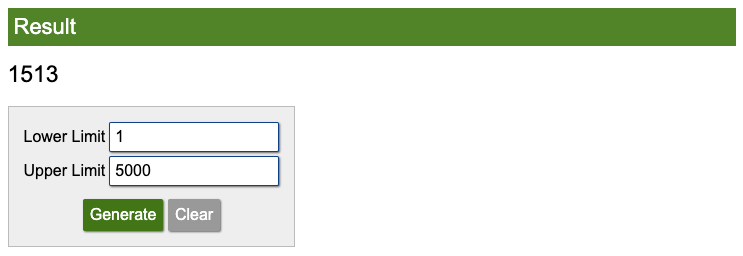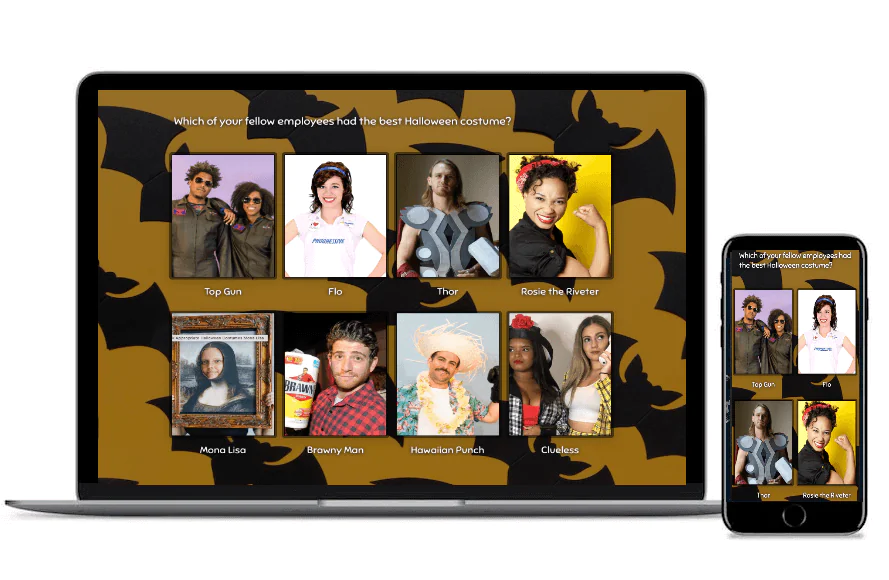Create your FREE Simple Random Sampling Survey, Poll, or Questionnaire now!
Simple Random Sampling Definition
The simple random sampling technique (sometimes called a “method of chances”) involves selecting a smaller group of participants (the sample) from a larger group of participants (the population). This method uses random sampling to give everyone from the total population an equal chance of being selected. Because the selection princess is random, the end sample is also more likely to be representative of the total population. So, why is simple random sampling “simple”? Because there is no easier way to extract a research sample from a larger population! Plus, because the sample is selected at random, a lot of issues associated with survey bias are eliminated.Methods of Simple Random Sampling
When population size is small, researchers may use the “lottery method.” For example, a company with 75 employees may want to get the opinion of 10 employees. They literally put 75 names in a hat and select 10 at random. Because employees who make up the subset of the larger group are chosen at random, each individual in the large population set has the same probability of being selected. This generally creates a sample that is representative of the larger group as a whole. Other times, researchers may use a random number table, which can be found in research books or online. When sample sizes and/or the participant population is very large, selecting a random sample is usually not feasible unless you’re prepared to spend a lot of time and money. To get around this, most researchers use computer-aided simple random sampling methods. This could be as simple as using a tool like the random number generator available on Calculator.net. Let’s say you have a population of 5,000 but only want to select a random sample of 100. Simply adjust the limits and click “Generate.” A random number is revealed (in the screenshot below, it’s 1513). Do this 100 times, and you’ll have your simple random sample. For more, be sure to check out our blog on How to Determine Sample Size for Your Survey.
For more, be sure to check out our blog on How to Determine Sample Size for Your Survey.
5-Step Simple Random Sampling Process
Researchers generally follow a simple random sampling process which includes five steps. We’ve listed them below and included a simple random sampling example.1. Define the Population
The first step is to determine the population base. This is the group of people whom you wish to learn more about via surveys. You want to be sure that the population you identify will adequately cover the outcome you are trying to solve for. For example, say you want to understand how consumers feel about new product packaging. Your population, then, is everyone who has bought the product with new packaging in the last 30 days.2. Choose Sample Size
Because surveying everyone who purchased the product would be a big undertaking, next you would determine how many people from the total population you will survey. Remember to pick a sample size large enough to be truly representative of the population. In our example above, let’s say 5,000 people purchased the product in the last 30 days. A good sample size is usually around 10% of the population, as long as this does not exceed 1000. So, you would need a randomly selected sample size of 500.3. Determine Population Units
This step entails putting together a list of all people within your population. Using our example, you would use existing purchasing data for the last 30 days to gather the names of everyone and enter them into a spreadsheet.4. Assign Numerical Values
Next, it’s time to give each person in the population group an unrelated numerical value. Because randomization comes next, this could be as simple as giving the first person on the list a 1 and the last person 5000.5. Select Random Values
Now, it’s time to randomize. From our numbered list of 5,000 people, you would randomly select 500 as your sample group. You could use the random number generator highlighted earlier, generating random numbers 500 times and highlighting the individuals on the list with the corresponding number. Congratulations, now you have your simple random sample!Advantages and Disadvantages of Simple Random Sampling
Simple random sampling research has many benefits, which make it a popular choice for researchers. Here are the advantages of this sampling technique.- Easy to conduct. Unlike more complicated sampling methods, researchers do not need to divide the population into subpopulations or take any other additional steps before selecting members. They simply select a random number of people from the total population.
- Good representation. Because the smaller sample is generated randomly, it is generally assumed that the group is representative of the entire population of participants. This means no further segmenting is needed to refine groups.
- Inexpensive. Because you’re simply pulling names from an existing population, no further segmentation is needed to refine groups. This cuts down survey costs significantly.
- Unbiased results. This method of sampling is generally unbiased; since the technique gives every participant a fair chance, the resulting sample is unaffected by the research team.
- Convenient. Usually, data sets are already listed or digitally stored for the entire population. Whittling the list down to a manageable sample is as easy as randomly selecting people from the existing list.
- Incomplete population demographics. If you’re working with Incomplete population demographics, certain groups could be excluded from the sample.
- Sampling errors. A random sampling isn’t always going to accurately reflect the population it is supposed to represent. An example of simple random sampling failing would be if you pull a sample of 25 people from a population of 100. It’s possible, though unlikely, that you could draw 25 men and 0 women, which could skew your results by not including a female perspective.
Simple Random Sampling with Online Image Surveys
As with any survey, to improve your response rates to avoid having to find a new random sample, consider using online surveys with photos. With SurveyLegend, our picture surveys boost engagement, help trigger respondent emotion and memory, and cross language barriers. They’re ideal when conducting simple random sampling! Below is an example of one of our photo surveys, designed to match the product packaging example we’ve used in this blog. You can also create polls with pictures, questionnaires with images, and much more.
Conclusion
Simple random sampling is an easy way to survey smaller subsets of a large population, without introducing survey bias. While this approach has some drawbacks, the advantages tend to far outweigh them. Whether you choose this type of sampling or another technique, we’ve got you covered. SurveyLegend lets you start for free, and has dozens of beautiful and responsive online survey templates from which to choose. Do you use simple random sampling when surveys? What do you feel are the biggest pros and cons of this method? Let us know in the comments!Create your FREE Simple Random Sampling Survey, Poll, or Questionnaire now!
Frequently Asked Questions (FAQs)
Simple random sampling involves selecting a smaller group of participants from a larger group of participants. The sample is chosen at random to lessen the chance of bias and give everyone from the total population an equal chance of being selected.
This sampling method is generally easy and inexpensive, and because it is randomized, the sample is usually representative of the larger population.
Most researchers use one of the following methods to select a sample at random: – Lottery method, such as drawing names from a hat, flipping a coin, and other physical means of selection. – Random number tables, which can be found in research books or online. These can be used to select respondents based on corresponding numbers. – Random number generators, which can be found online. They automatically generate a number between a set limit, which can be used to pull a participant with a corresponding number.




